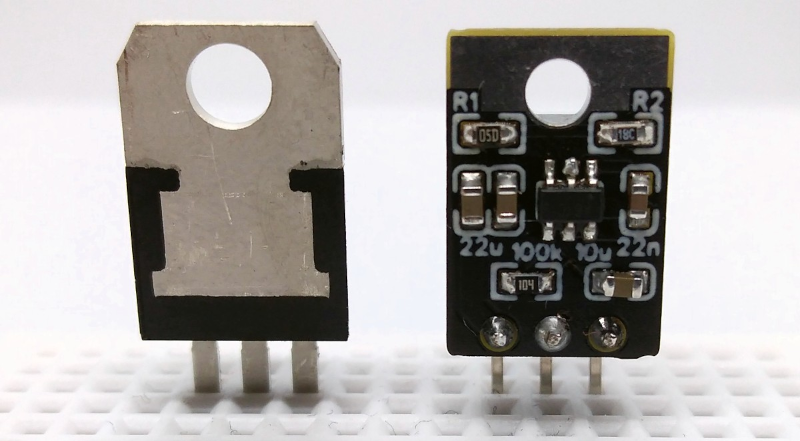
The 78XX series of regulators are very handy to use. If you need, say, a 5V regulator, you grab a 7805, add a capacitor for stability, and send in enough voltage for the regulator to work with. Cheap and easy. However, the part is not without its faults.
A stock 7805 can’t convert 5.1V to 5V. You need to have a good bit more voltage coming in. But the more voltage you put in, the more the part is going to dump out as heat. So running from 9V is going to be cooler than running from 24V. All that heat isn’t very energy efficient on batteries, either. [Stefan] wanted to do better, so he made a drop-in replacement for these venerable regulators some time ago. But he’s recently made the board layouts available so you can build your own replacement, too.
The device accepts 4.5 to 16V, and you can select the output voltage using two resistors. You can draw up to 2A out of the regulator, which is more than you can say for a stock 7805.
The heart of the tiny board is an SD8942 buck converter. There are two voltage-setting resistors, one more resistor, a handful of capacitors, and — of course — an inductor. The schematic notes you can also replace the IC with an MT2492. With a right-angled header, you can swap the board in for a standard 78XX. Note the values on the schematic are set for 5V, but you can change them pretty easily.
This is a great example of how surface mount has changed so many things. We remember old 7805 “drop in” switching supplies that were much fatter and they weren’t inexpensive. Boards are cheap these days, and if you want the boards assembled, it looks like they’d cost $20 or $25 each in small quantities. But most of that is in setup and loading, so in larger quantities, the unit price would drop quickly. Or just solder them yourself.
If you want to see how the real McCoy works, we’ve watched [Ken] look inside the 7805 before. If you want to dive into the mechanics of buck converters, we did two simulations about that, too.
The 7805 is Dead! Long Live the 7805!
Source: Manila Flash Report
0 Comments